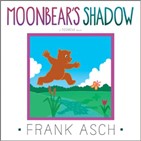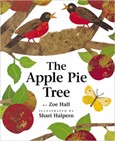
Station 12: Time
TIME IS MOVEMENT! TIME IS MEMORIES! TIME IS EVERYWHERE!
There are many different ways to tell time. The sun moves across the sky during the day, marking the hours as they pass. Trees grow rings, which you can see in stumps. You can count the rings to see how old the tree is! Many trees bud, grow leaves and fruit, and then lose leaves to mark the seasons of each year. And you can view different stars and planets during different times of the year.
WHAT IS THAT IN THE NIGHT SKY?
You can view an interactive sky map, courtesy of the Southwest Washington Astronomical Society HERE. It can display starts, planets, constellations, and other wonders of the sky. Want to find a Astronomical Club in another area of Washington? Check this list!
Washington also has a very large telescope open to the public at the Goldendale Observatory. This is a great place for the whole family to visit, with solar and lunar shows available most days/evenings. The Observatory area is also a Washington State Park Heritage Site.
Watching the moon is another great way to see the passage of time. The moon goes through all it’s phases in 28 days: new, waxing crescent, first quarter, waxing gibbous, full, waning gibbous, third quarter, and waning crescent. Here’s a great video on the moons movement and phases.
Want to do a simple activity that takes a whole month to complete? Make a Flip Book of the Moon Phases!
HELLO SUN!
We have lots of rainy days in Thurston County, but when the sun is out you can watch time move during the day by watching shadows! A great project to observe shadows is to make a Solar System Mobile. You can then track the mobile’s shadow movement across the floor!
You can also grab some sidewalk chalk and run outside and experiment with your own shadow (or the shadows of a friend, a toy, anything!)! Check out this plan to help guide you.
And if you want to really watch the hours go by outside, make your own sundial!
TIME IN TREES
How old is that tree? You can count the rings on tree stumps to see how old the tree was when it was cut down. When trees grow in the spring and early summer, the ring they produce is light-colored. When they grow in late summer and fall, the ring is. One light ring plus one dark ring equals one year of the tree’s life. If the year was warmer and wetter, the rings will be wider. So 50 rings would equal 25 years!
The oldest tree in the world is called Methuselah, and it is a Great Basin bristlecone pine. As of 2022, it is believed to be 4,853 years old! It is located in the White Mountains of eastern California, but it’s exact location is kept secret.
Garfield Elementary School has a great tree stump located in the playground near this station. Can you count the rings? Divide this by 2 to see how old this tree got!
You can also tell the seasons by looking at deciduous trees. Deciduous trees are usually bare in winter, bud in spring, have green leaves in summer, and start to lose their leaves in autumn/fall. Which is your favorite season? Find out more about trees at Station #3.
BOOKS TO READ TOGETHER

The Moon Book by Gail Gibbons
An up-to-date, clear and interesting introduction to our magnificent moon from the award-winning author of science books for children.
Shining light on all kinds of fascinating facts about our moon, this simple, introductory book includes information on how the moon affects the oceans’ tides, why the same side of the moon always faces earth, why we have eclipses, and more.
Find the Library book HERE.

Moonbear’s Shadow by Frank Asch
Moonbear tries to outwit his troublesome shadow in this charming reissue of a beloved classic by award-winning author and illustrator Frank Asch.
One sunny day Bear decides to go fishing, but his shadow keeps scaring the fish away, time and time again. Bear tries everything he can think of to get rid of this pesky nuisance. And at last he succeeds—or so he thinks!

The Apple Pie Tree by Zoe Hall (Author) and Shari Halpern (Illustrator)
Two young sisters follow the progress of their apple tree through the seasons, from a bare tree in the winter, through the pink blossoms of the spring, to the apple picking in the autumn.